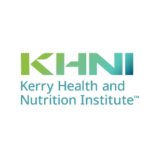
‘Free-from’ trends like gluten-free and lactose-free are becoming increasingly common with consumers, leaving many scientists and health practitioners scratching their heads. After all, the rate of diagnosed food allergies aren’t increasing. Nevertheless, gluten-free has grown to an industry worth almost $2 billion.
If you speak to a dietitian about the role of ‘free-from’ foods in the diet, they will give you a specific definition of what a food allergy is, how it’s different from an intolerance, and how neither are the same as a self-diagnosed insensitivity. If you speak to a person buying soy milk at the supermarket who’s self diagnosed as lactose intolerant, they might say it doesn’t matter what their ‘diagnosis’ is; all they know is that if they don’t have lactose, they feel better.
Food sensitivities can be a confusing and controversial topic, but the article “The Controversial Conundrum of Food Sensitivities” in Food & Nutrition Magazine provides an excellent overview of what we know and the less known nuances of food sensitivities. Taylor Wolfram, MS, RDN, LDN explores the different definitions of food sensitivities and how they translate to behavior and food choices. Moving forward, meeting in the middle with healthy, free-from food choices is a great way to bridge the gap between what we know and what we don’t.

 We bring the voice of science to some of the most challenging questions facing the food and beverage industry day to day through our network of over 1000 Kerry scientists, external collaborators, and our Scientific Advisory Council. Our content comes straight from scientists and experts in nutrition, taste, food, and sensory sciences to make sure we are providing up-to-date, credible information to guide people shaping the future of food.
We bring the voice of science to some of the most challenging questions facing the food and beverage industry day to day through our network of over 1000 Kerry scientists, external collaborators, and our Scientific Advisory Council. Our content comes straight from scientists and experts in nutrition, taste, food, and sensory sciences to make sure we are providing up-to-date, credible information to guide people shaping the future of food. 

